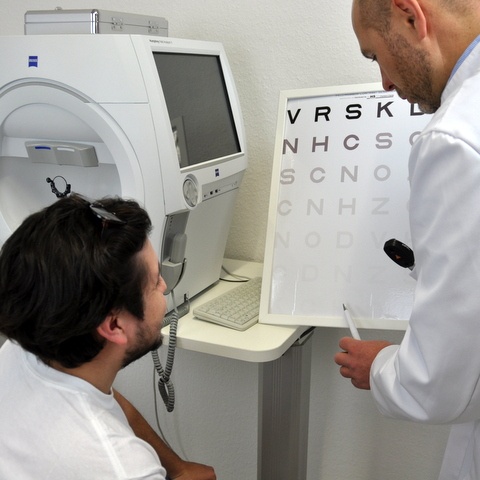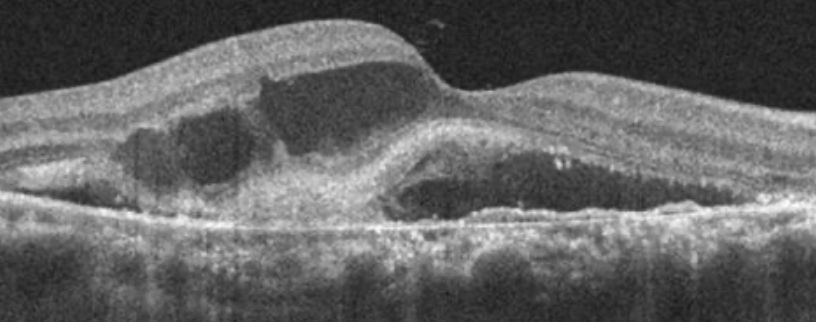
In the world of pediatric ophthalmology, assessing vision in infants and young children with optic nerve and retinal conditions is a delicate, complex endeavor. Traditional vision tests often fall short with our youngest patients, who may be too young to read an eye chart or express what they see. So how do we accurately gauge their preserved vision?
This question has fueled a groundbreaking shift in pediatric vision assessment, sparking the creation of innovative, child-friendly techniques and advanced technologies. From state-of-the-art electrophysiology to AI-powered analysis, these developments promise not only more precise diagnoses but also the possibility of early intervention and better long-term outcomes for children with complex eye conditions.
In this blog, we’ll take you through the remarkable methods being used and refined to unlock insights into functional vision in children. We’ll uncover the challenges, the recent breakthroughs, and the future of pediatric vision care. Whether you’re a healthcare professional, researcher, or a parent on this journey, join us as we illuminate the evolving world of pediatric vision testing, one discovery at a time.
Critical Challenges and Methodological Innovations in Pediatric Vision Assessment
- Limitations of Age-Appropriate Testing
Standard visual acuity tests, such as eye charts, are not feasible for infants. Studies indicate that preferential looking tests and forced-choice preferential looking methods can effectively gauge visual acuity in non-verbal children by observing visual preferences reveal a child’s ability to distinguish patterns, providing a quantitative baseline for vision. However, these methods are limited to high-contrast stimuli and cannot capture subtle aspects such as peripheral vision loss.
- Role of Electrophysiological Tests for Objective Data
Electrophysiological tests like Visual Evoked Potentials (VEP) are crucial for assessing the visual pathway’s integrity. VEP provides objective data on the brain’s response to visual stimuli, helping clinicians detect interruptions in signal transmission, which are common in optic nerve pathologies). Electroretinography (ERG) is another essential test, particularly in retinal disorders, as it evaluates the retina’s electrical response to light, offering objective data that complements structural findings from imaging. While highly informative, these tests do not capture real-world visual function, which requires observational and behavioral assessments.
- Challenges in Functional Vision Assessment
Beyond visual acuity, functional vision assessment is critical for understanding how children use their vision in daily contexts. Observational methods, such as fixation and following (tracking objects visually) and adapted visual field testing for peripheral vision, provide real-world insights that are especially important in cases of optic nerve pathology. However, the producibility of these methods can vary, as they depend heavily on the child’s cooperation and the examiner’s skill in interpreting subtle cues.
- Structural Imaging with OCT

Optical Coherence Tomography (OCT) is indispensable for identifying structural abnormalities in the retina and optic nerve, which directly impact vision. OCT produces high-resolution images, yet successful imaging in children requires them to remain still a notable challenge without anesthesia, especially for younger patients ) . The absence of a stable can limit the diagnostic picture, potentially leaving retinal and optic nerve conditions under-assessed.
- Multidisciplinary Integration in Pediatric Vision Care
Research underscores the benefits of a multidisciplinary approach for pediatric cases, combining inputs from pediatric ophthalmologists, neuro-ophthalmologists, and low vision specialists (Coleman Vision Center). A coordinated care plan, diagnosis accuracy and allows for targeted interventions. For children with visual impairments, involving occupational therapists to assess functional vision use in daily activities can further enrich the understanding of how visual impairments affect the child’s quality of life.
The Fedorov sion Clinic Approach: Addressing Challenges with Specialized Techniques
At Fedorov Restore Vision Clinic, we employ a scientific, multidisciplinary approach to overcome these assessment challenges and provide comprehensive insights into pediatric vision function:
- Enhanced Age-Appropriate Testing
Our clinic adapts preferential looking and forced-choice preferential looking methods to maximize their diagnostic utility. By using structured visual patterns and child-friendly settings, we reduce stress and increase the accuracy of visual acuity estimates, laying a foundational understanding of each child’s vision.
The Tactile Acuity Chart (TAC) test is a crucial tool for assessing tactile sensitivity in visually impaired children, which is fundamental for activities such as Braille reading and other tactile-based learning methods. The test involves presenting the child with raised dot patterns on cards, progressively smaller and more intricate, which they identify using their fingertips. The smallest pattern a child can accurately recognize determines their tactile acuity level.
%20test.jpeg?width=1141&height=1280&name=Child%20participating%20in%20a%20TAC%20(Tactile%20Acuity%20Chart)%20test.jpeg)
The TAC test offers several benefits. It helps identify potential issues with tactile perception early, providing educators and parents with valuable information for personalized educational plans. It also tracks the development of tactile skills over time, making it a reliable and standardized method validated for use with visually impaired children. However, attention, fatigue, and motivation can influence results, so multiple assessments may be necessary for a clearer understanding.
By understanding the TAC test, parents can better support their child’s tactile development. They can work closely with educators to craft tailored strategies, monitor progress, and advocate for appropriate interventions. This collaboration ensures the child receives the best opportunities for tactile learning and development, empowering them to achieve greater independence and success.
- Advanced Electrophysiological Testing

We employ VEP and ERG to gain objective, reliable data on both retinal function and visual pathway integrity. These tests are vital for understanding vision in children with retinal and optic nerve pathologies, providing clear insights even in non-verbal or non-cooperative patients). Our clinic’s focus on these assessments bridges gaps left by behavioral assessments, enhancing diagnostic precision.
- Functional Vision and Real-World Application
By observing fixation and following behavior and conducting adapted visual field tests, our assessments prioritize real-world functionality. This approach is rooted in evidence that functional vision assessments, when combined with electrophysiological data, yield a holistic view of a child’s practical vision capabilities, enabling more informed treatment and support recommendations (AAO).
High-Resolution Imaging with OCT- Clinic uses OCT to produce detailed retinal images, which help us identify structural abnormalities. Although young children’s cooperation can be a limitation, our practitioners have experience working with children, maximizing our success rate in capturing high-quality OCT scans.
- Collaborative, Multidisciplinary Care
We recognize that comprehensive care requires coordination beyond our clinic. Our team collaborates closely with pediatric ophthalmologists, neuro-ophthalmologists, and occupational therapists to ensure a holistic view of the child’s vision, including support strategies that enhance daily functionality. This multidisciplinary focus enables our clinic tod recommendations that are both diagnostic and developmental.
Evidence-Based Benefits for Families at Fedorov Restore Vision Clinic
Parents can expect several scientifically grounded benefits by choosing Fedorov Restore Vision Clinic:
- Pediatric-Adapted, Evidence-Based Assessments: Our clinic’s use of research-supported techniques, including preferential looking and electrophysiology, provides accurate visual data adapted to children’s needs.
- Objective and Reliable Data: Electrophysiological tests (VEP, ERG) give objective insights into visual pathways and retinal health, offering clarity where behavioral methods may fall short.
- Real-World Functional Insights: Our functional vision assessments focus on practical applications of vision, offering parents a realistic view of their child’s abilities in daily contexts.
- Comprehensive, Multidisciplinary Support: Through collaboration with other specialists, we provide a care framework that addresses both clinical needs and daily life functionality, informed by scientific evidence of best practices in pediatric vision care.
Conclusion: Realistic Expectations and Collaborative Care
Fedorov Restore Vision Clinic offers evidence-based assessments that provide valuable insights into children’s residual vision, especially for complex cases. However, no single clinic can cover the entire spectrum of pediatric vision care. By combining our assessments with continuous follow-up from a pediatric ophthalmologist and other specialists, parents can achieve the fullest understanding of their child’s visual health, supported by data-driven, multidisciplinary care.

Our commitment at Fedorov Restore Vision Clinic is to provide science-backed, child-friendly assessments and to partner with families and care teams in making informed decisions for each child’s visual development.
Literature Cited:
- Fedorov, A. “Clinical Evaluation at Fedorov Restore Vision Clinic.” Fedorov Restore Vision Clinic, 2024. Available at: restorevisionclinic.com/ophthalmological-examination/clinical-evaluation-fedorov-restoration-therapy-berlin
- 2.Coleman, D. “Why a Functional Vision Exam Matters.” Coleman Vision Center, 2023. Available at: colemanvisioncenter.com/vision-therapy-optometrist/why-a-functional-vision-exam-matters
- “Preserving Your Vision: The Critical Role of Routine Eye Exams.” Clarity Vision, 2024. Available at: findclarityvision.com/blog/preserving-your-vision-the-critical-role-of-routine-eye-exams
- “Pediatric Low Vision and the Multidisciplinary Approach.” Eyewiki, American Academy of Ophthalmology, 2023. Available at: aao.org/eye-health/tips-prevention/eye-exams-101
- .Black, J. et al. “Pediatric Functional Vision Exam: Developing an Effective Approach.” PMC, 2024. Available at: pmc.ncbi.nlm.nih.gov/articles/PMC8265335
- Chiu, K. “Advanced Techniques in Pediatric Vision Assessment.” Northshore Eye, 2024. Available at: northshore-eye.com/right-eye-dynamic-vision-testing
- Lee, T. “Contrast Sensitivity and Beyond: Key Elements of Visual Function in Children.” Amplivox Knowledge Hub, 2024. Available at: amplivox.com/education/knowledge-hub/why-are-visual-acuity-tests-important





Comments
Currently, there are no comments. Be the first to post one!